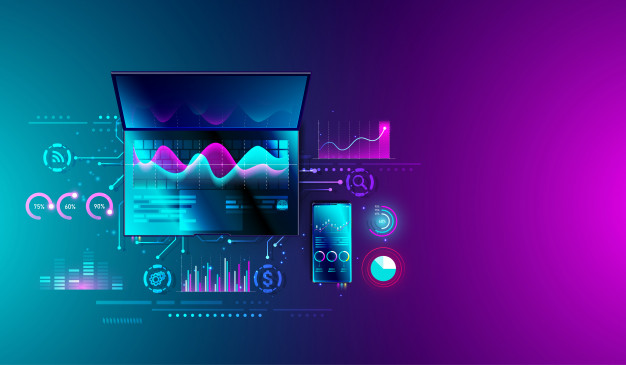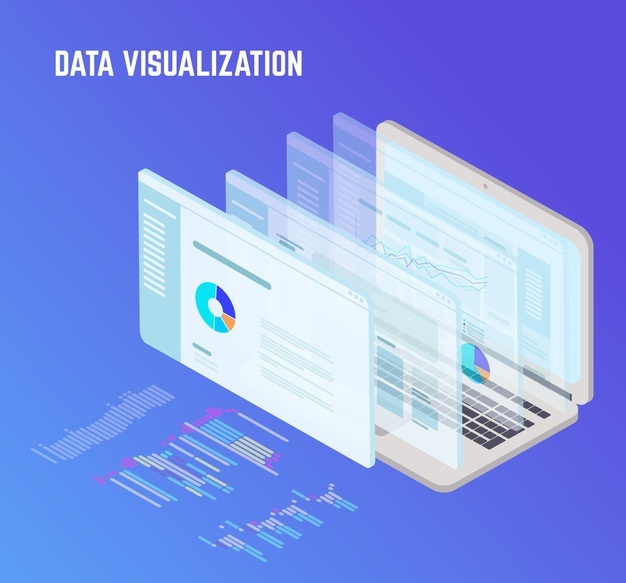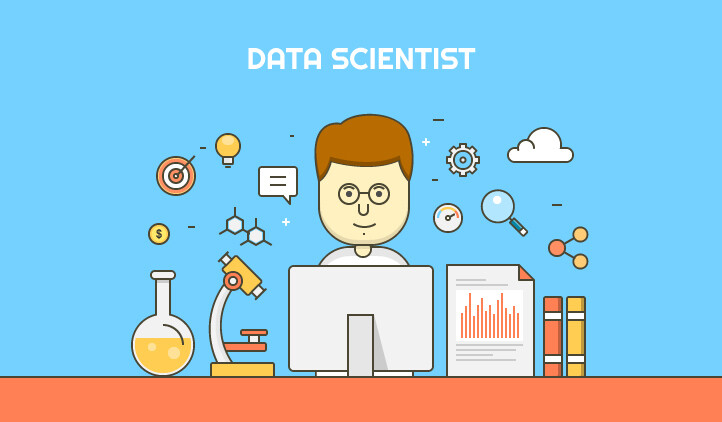 [Image Source – Freepik]
[Image Source – Freepik]
Ever wondered how most of the fastest-growing jobs in the tech sector today were not even existing a few years ago. It is surveyed that the employees are worried about the skill gap, which is restricting them from shifting to companies which offer better skill development initiative.
Among all the hottest skills in the market, Data Visualization with Data Presentation can be pegged as the vital skillset. Even the small businesses are gaining more profound benefits of data visualization for analyzing faster information in a graphical format to discovering trends that can correlate and get valuable insights. Each company is looking for the data visualization experts no matter the size of the organization.
In this article, we will be looking at some key points to why you need to learn data visualization if you wish to admit your career in data science.
What is Data Visualization
 [Image Source – Freepik]
[Image Source – Freepik]
The term is an art and science of presenting general statistical information in a simple yet understandable and informative visual format for making it easily accessible to the users.
People are visual animals. Also, the human cerebrum is uncommonly well-adjusted to preparing that data: around 30 percent of the mind’s cortex is committed to the vision, versus 8 percent for contact and 2 percent for hearing. Approximately 60 percent of all mind capacity is regularly engaged with the whole chain of view from discernment to acknowledgment to response. Text is a visual portrayal of information. In any case, it is a mind-boggling one, patterns of patterns, that require extra preparing to unravel into significance. Shapes, hues, and straight lines, then again, are simpler to process.
Be that as it may, excellent data perception is constrained distinctly by the expertise and creative mind of the individual making it. Not at all like most information science callings, it doesn’t really require an inside and out and formal instruction to be great at information perception. Despite the fact that you need to comprehend what the fundamental information speak to, the profound specialized insights concerns how it was at first determined don’t really make a difference.
In spite of the fact that packages like Tableau and chart.js can mechanize essential sorts of information representation, the really notable and paramount information perceptions, for the most part, require some special craft and programming work.
Working With Data Visualization as a Data Scientist
 [Image Source- smartdatacollective]
[Image Source- smartdatacollective]
The modernity and multi-disciplinary aptitudes required to make such mind-boggling, yet enamoring, representations, remove them from the hands of the normal data researcher and into the domain of authorities. Numerous data perception specialists don’t have any formal experience as data researchers, yet the individuals who do have unmistakably more devices available to them for diving into complex data indexes and hauling out delegate outlines. An officially prepared data researcher with a graduate degree has most likely been uncovered or instructed how to utilize R or Python to make direct associations with information sources, filter or procedure the information, and transform it into visual diagrams.
All information viz specialists will wind up working with different experts, either the individuals who are delivering or expending the data — understanding the information that administrators and other objective crowds need to see in creating a value perception. For data science specialists who aren’t likewise incredible craftsmen, they may likewise go to genuine specialists or visual planners to help set up together powerful, appealing perceptions. Utilizing proficient tools to counsel or make the fundamental structure can be a distinct advantage.
Regardless of whether you wind up working in the field as an information researcher or branch out only into information perception, you can be guaranteed that whatever information you are working with will be progressively valuable and get more consideration in the event that you use representation strategies to introduce it.
How can you learn Data Visualization
The Business Analytics 360 by AnalytixLab is aimed to upskill the basics of SQL, Taleay, and Excel for the beginners to upgrade and move to advanced tools like Python, SAS, and machine learning. The course is designed to cover all the basic statistical concepts, predictive modeling techniques, and advanced analytics along with other in-demand tools like Excel, Python, Tableau, and SAS. Also, the course offers the best combination of theory and tools that is led by leading experts. In the end, the certification course is offered at a broad range of candidates who want to pivot to the data science field and make a leap into the business analyst.
Tools covered in the course:
Advanced Excel, Tableau, VBA, Python, and SAS
Course description:
The course is one of the most extensive Data Science course and considered as the industry’s premier job-oriented course specially tailored for candidates who do not have a background in data analytics tool or BI. Any individual can pursue this course no matter their qualification or professional background. The course delivers both the business-specific and fundamentals applications, henceforth helping seekers to pick up in-demand skills for launching their career effectively.
Wrap Up
Here, we come to the end of the article. We hope you must understand the details required before proceeding into the data visualization. Keep Learning!
